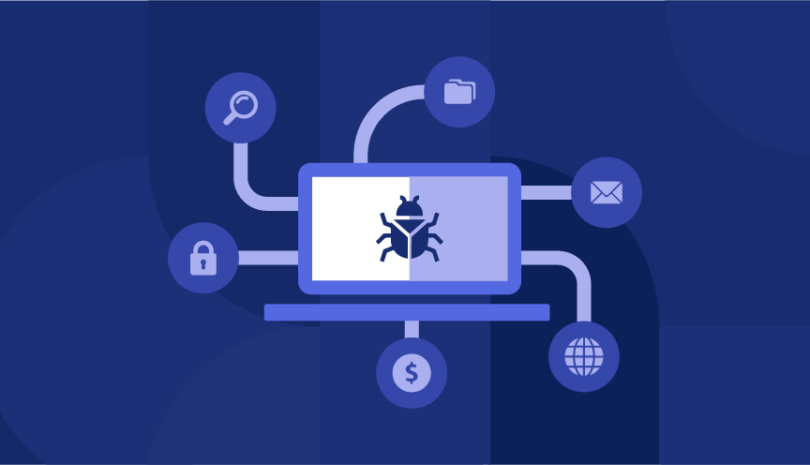Organizations rely on trusted third parties, cloud providers, SaaS tools, and security vendors, to power operations. But attackers exploit this trust, turning “secure” software into threat vectors that cost millions, damage reputations, and disrupt business. Incidents like the Cyberhaven Chrome extension attack, the Ascension healthcare breach, and the Marks & Spencer (M&S) ransomware attack show how vendors can become liabilities for both security teams and business leaders.
Why Trusted Vendors Are Becoming Threat Vectors
These are not brute-force attacks. Threat actors now infiltrate organizations through stealthier, trust-based channels:
- Hijacked permissions: Attackers misuse legitimate access (e.g., OAuth) to move undetected.
- Malicious updates: Auto-updates, meant for security, deliver malware.
- Configuration errors: Cloud misconfigurations create hidden vulnerabilities.
These tactics bypass traditional security controls by targeting trusted systems and third-party vendors, as shown in the three real-world breach examples that follow.
3 Real-World Third-Party Breaches Explained
Example 1: Cyberhaven Browser Extension Supply Chain Attack
In 2024, attackers pushed a malicious update through the Cyberhaven Chrome extension, exposing a critical browser supply chain flaw.
Attackers used stolen credentials to access the extension’s publishing console.
- They deployed a malicious version via legitimate channels, bypassing defenses.
- The update enabled cookie and session hijacking, allowing attackers to impersonate users and steal data from SaaS platforms.
- Over 30 other extensions were compromised, affecting 2.6 million users.
- Business impact: Data theft and service disruptions cost millions in recovery and eroded customer trust; TPCRM could have detected unusual vendor activity early, enabling leadership to avoid losses and protect brand reputation.
This incident highlights how attackers weaponize trusted tools, evading traditional vetting.
Example 2: Healthcare Disruption via Ascension Vendor Breach
Attackers breached Ascension, a major U.S. health system, through a third-party software vendor connected to its IT systems.
- The attack forced ambulance diversions, shut down EHR systems, and disrupted care delivery nationwide.
- Critical systems were inaccessible for days, endangering patient lives.
- Business impact: Recovery efforts cost millions and damaged patient trust; TPCRM’s continuous monitoring could have identified vendor risks before the breach, ensuring operational continuity and compliance.
- As detailed in this Context blog, the breach shows the risks of under-assessed vendors.
This incident underscores how vendor security gaps cause severe operational and financial consequences.
Example 3: Marks & Spencer Breach Through Internal Vendor
Attackers targeted Marks & Spencer through a third-party vendor handling customer email communications.
- Unauthorized emails were sent to customers, revealing that attackers had successfully compromised internal communications tools.
- The attack reportedly began months earlier, when threat actors stole password hashes from the Active Directory.
- To respond, M&S brought in heavyweights: CrowdStrike, Microsoft, and Fenix24, showing how even elite security vendors can be swept into the consequences of poor third-party risk controls.
- Business impact: Contactless payments failed, online orders were disrupted, and warehouse operations were halted, affecting over 64,000 employees.
This incident shows that third-party risk isn’t limited to external tools. Vendors embedded deep within your operations, including those tasked with security itself, can become attack paths if not continuously monitored.
What Went Wrong? Where Traditional TPRM Falls Short
Traditional third-party risk management (TPRM) approaches failed to detect these threats:
- Periodic assessments missed risks emerging between reviews.
- Security teams relied too heavily on static questionnaires and superficial vendor profiles.
- They overlooked modern attack vectors like hijacked permissions, domain spoofing, or supply chain backdoors.
- No tools validated vendor behavior in real time or detected unusual activity.
For CISOs, this means it’s time to move beyond checkbox compliance and implement continuous monitoring that flags behavioral anomalies, validates vendor activity dynamically, and adapts to how attackers change tactics. This is exactly what a TPCRM platform is built to deliver.
What TPCRM Does Differently and Why It Matters
Third-Party Cyber Risk Management (TPCRM) adapts to modern threats, protecting both security and business outcomes.
- Continuous monitoring detects unusual vendor activity and threat signals in real time.
- It evaluates vendors across technical, operational, and reputational risks.
- TPCRM prioritizes risks based on a vendor’s role, access, and business criticality.
- This proactive approach minimizes breaches, ensures compliance, and protects revenue.
Key Lessons: What Security Teams Need to Prioritize Now
Trust requires continuous validation to safeguard operations and finances.
- Security tools and vendors need rigorous third-party scrutiny.
- Threat models must address hijacked permissions and browser extension risks.
- High-access vendors demand deeper visibility and adaptive controls.
- TPCRM solutions like Panorays enable security teams to detect risks early, reduce exposure, and protect business continuity.
How to Communicate Third-Party Risk to the C-Suite
You, as a security practitioner, know the technical risks, but communicating their business impact is key to getting executive buy-in. These are the points your C-suite needs to hear:
- Protect revenue and operations: Proactive third-party risk management helps avoid costly breaches, downtime, and supply chain disruption.
- Preserve customer trust and brand value: Continuous monitoring helps you detect issues before they escalate, protecting reputation as well as data.
- Drive smarter vendor and compliance decisions: TPCRM delivers actionable insights that support strategic goals, not just security checkboxes.
- Build resilience, not just defense: When risk management aligns with business outcomes, it becomes a competitive advantage.
Third-party cyber risk isn’t just a security issue, it’s a business risk. And the companies that recognize this are the ones that stay ahead.
Learn how Panorays can help you take control of your vendor ecosystem and turn risk into resilience. Get a demo.


